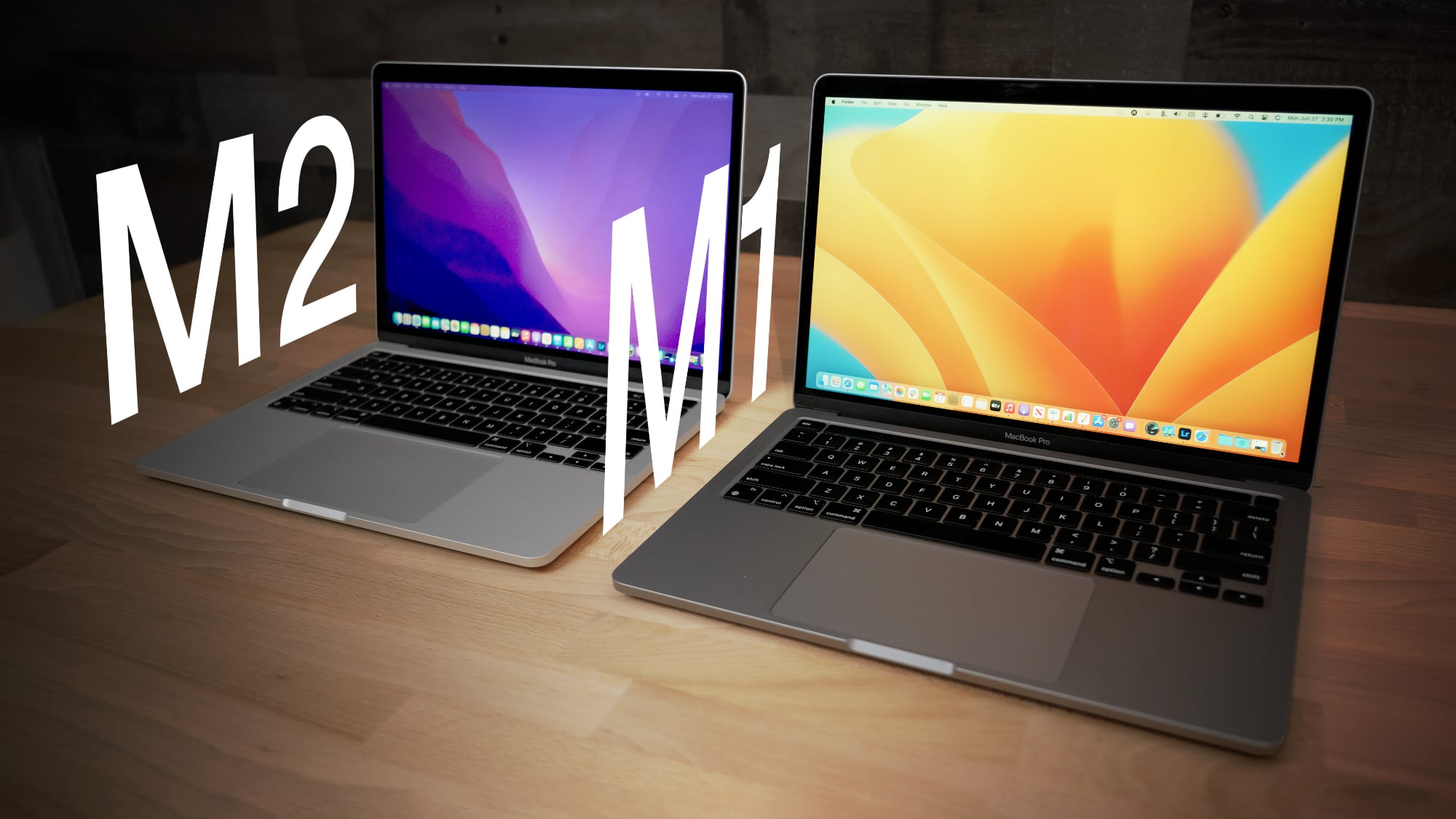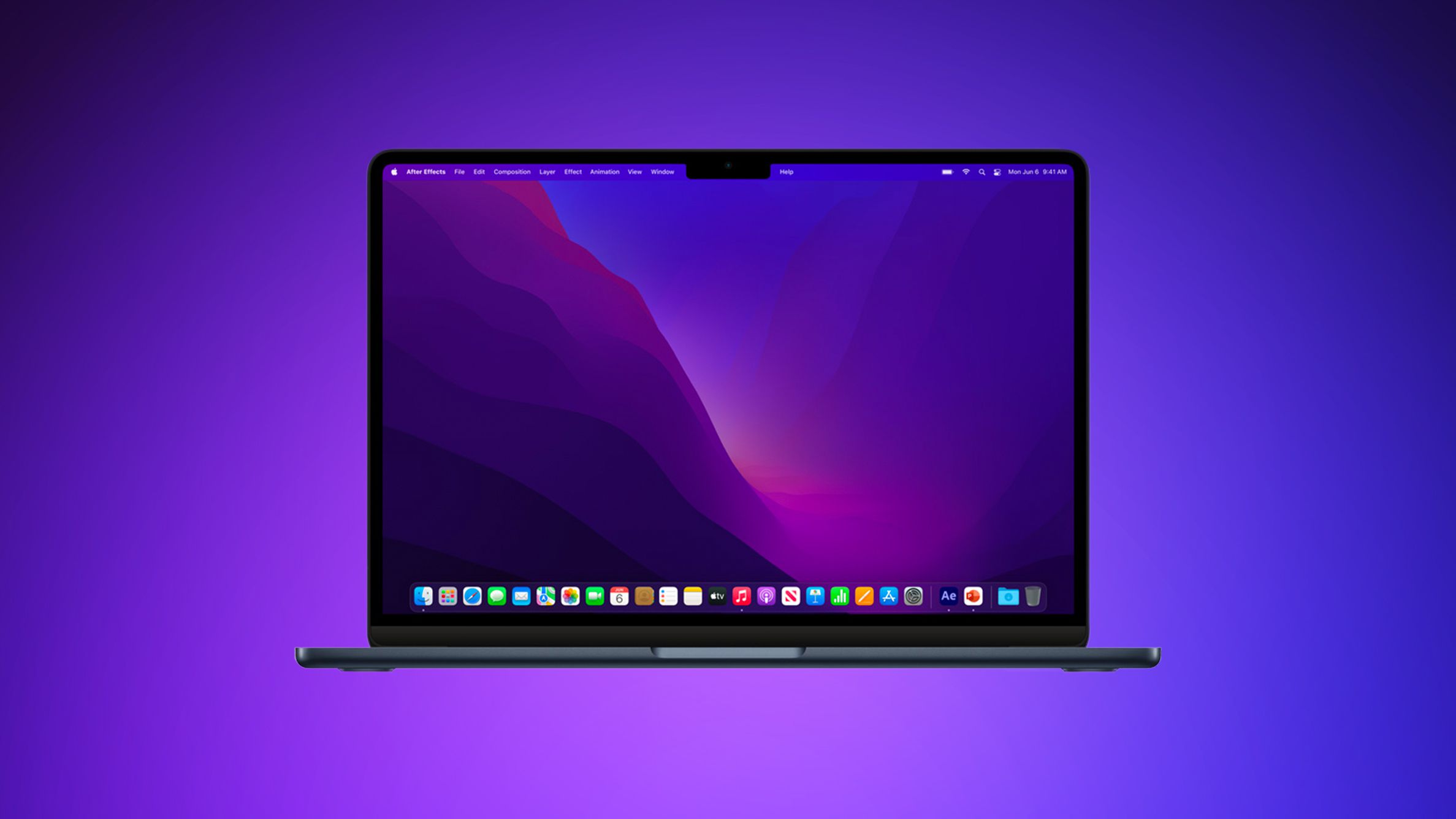
Choosing a new Mac often involves consideration of the many Apple silicon chips now on offer, so our comprehensive guide covers their generations, variations, and performance benchmarks to help you decide which is best for you.
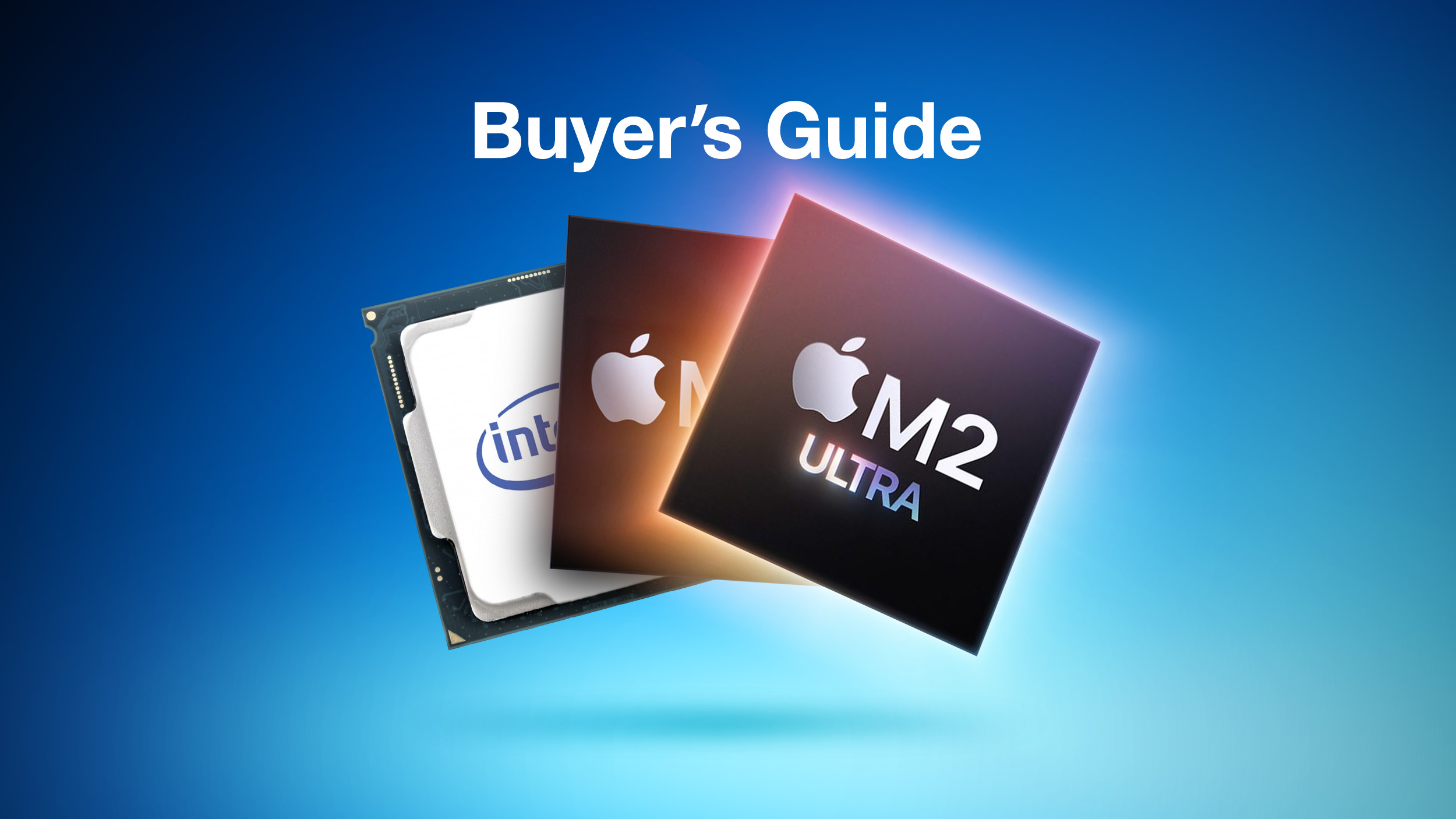
After iterating for over a decade in the iPhone and iPad, Apple in 2020 brought its custom silicon chip technology to the Mac, enabling major performance and power efficiency improvements. Since then, Apple silicon has expanded to every Mac model, spurring new designs and capabilities that were previously impossible.
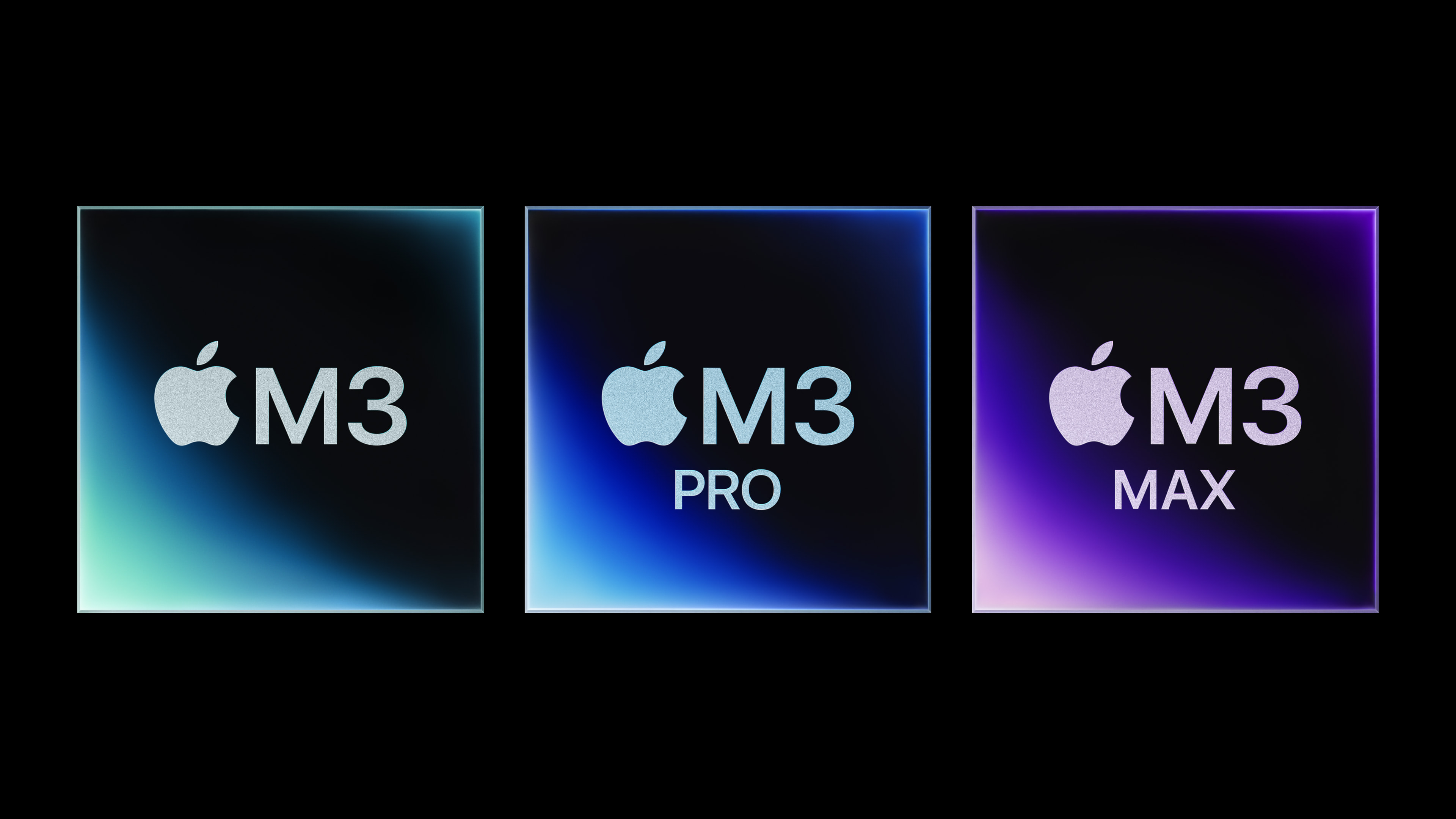
Understanding the distinctions between Apple silicon chips will help you make an informed decision when selecting the right Mac for your needs. There have been three generations of Apple silicon for the Mac, each with up to four different chip variants. The main differences between the four different chip variants are as follows:
- M1, M2, and M3: Standard Apple silicon chip with a balance of performance and power-efficiency.
- M1 Pro, M2 Pro, and M3 Pro: Apple silicon chip with additional high-performance CPU cores. The M1 Pro and M2 Pro feature twice the memory bandwidth of the M2 and M3 chips (200GB/s), while the M3 Pro features 50% more memory bandwidth than the M2 and M3 chips (150GB/s).
- M1 Max, M2 Max, and M3 Max: Doubles the GPU cores of the M1 Pro, M2 Pro, or M3 Pro and features up to twice the memory bandwidth (400GB/s) of the M1 Pro or M2 Pro chips for better graphics performance. M3 Max also adds extra CPU cores.
- M1 Ultra and M2 Ultra: Encompasses two M1 Max or M2 Max chips for double overall CPU and GPU performance, as well as twice the memory bandwidth (800GB/s).
Apple Silicon Generations
With the introduction of the M2 series of chips in 2022 and M3 series of chips in 2023, Apple made some key improvements over the initial M1 series from 2020.
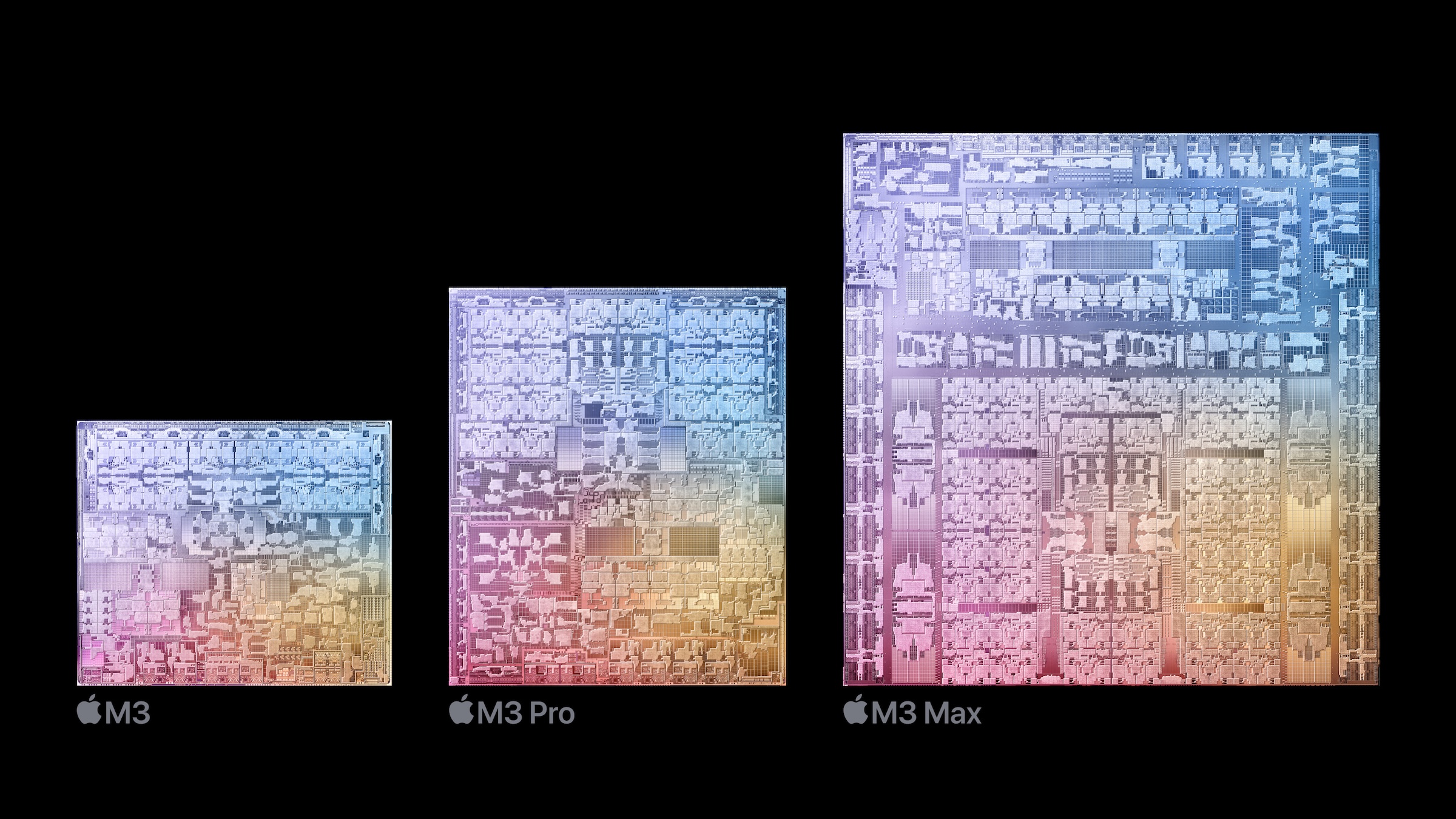
The below table provides a comparison between the M1, M2, and M3 series, highlighting differences in the chips they are based on, node, CPU clock speed, Neural Engines, and more:
| M1 Series | M2 Series | M3 Series |
|---|---|---|
| Based on A14 Bionic chip from iPhone 12 (2020) | Based on A15 Bionic chip from iPhone 13 (2021) | Based on A17 Pro chip from iPhone 15 Pro (2023) |
| 5nm node (N5) | Enhanced 5nm node (N5P) | 3nm node (N3B) |
| 3.20 GHz CPU clock speed | 3.49 GHz CPU clock speed | 4.05 GHz CPU clock speed |
| Neural Engine | 40% faster Neural Engine | 15% faster Neural Engine |
| Video decode engine | Higher-bandwidth video decode engine | |
| Support for AV1 decode | ||
| New GPU architecture | ||
| Dynamic Caching | ||
| Hardware-accelerated ray tracing | ||
| Hardware-accelerated mesh shading | ||
| Image signal processor (ISP) | New image signal processor (ISP) | Same ISP as M2 |
| Launched November 2020 to March 2022 | Launched June 2022 to early 2024 | Launched starting November 2023 |
The performance improvements seen with each iteration of Apple's Neural Engine is indicative of the generation-over-generation improvements that the company has been able to achieve with its custom silicon.

The standard M2 chip also features several additional changes over the M1 chip, its direct predecessor, that are worth noting:
| M1 | M2 |
|---|---|
| 68.25GB/s memory bandwidth | 100GB/s memory bandwidth |
| Media engine for hardware-accelerated H.264 and HEVC | Media engine for hardware-accelerated H.264, HEVC, ProRes, and ProRes RAW |
| ProRes encode and decode engine |
All Apple silicon chips other than the M1 chip contain media engines for hardware-accelerated H.264, HEVC, ProRes, and ProRes RAW video. The M3 chip also adds support for AV1 decode.
Thanks to use of more advanced fabrication processes and larger surface areas, Apple has added more transistors to its M-series chips with each generation:
| (Standard) | Pro | Max | Ultra | |
|---|---|---|---|---|
| M1 | 16 billion | 33.7 billion | 57 billion | 114 billion |
| M2 | 20 billion | 40 billion | 67 billion | 134 billion |
| M3 | 25 billion | 37 billion | 92 billion |
Devices
Each Apple silicon chip is only available in a select number of Apple devices. The standard M1 and M2 chips are present in a large number of laptop and desktop devices, several iPad models, and even the upcoming Vision Pro headset, owing to their requirement for a balance of performance and efficiency. On the other hand, the M2 Ultra, Apple's most powerful custom silicon chip to date, is only available in the high-end Mac Studio and Mac Pro... Click here to read rest of article
Article Link: Apple Silicon Buyer's Guide: Which Chip Should You Choose?
Last edited:


